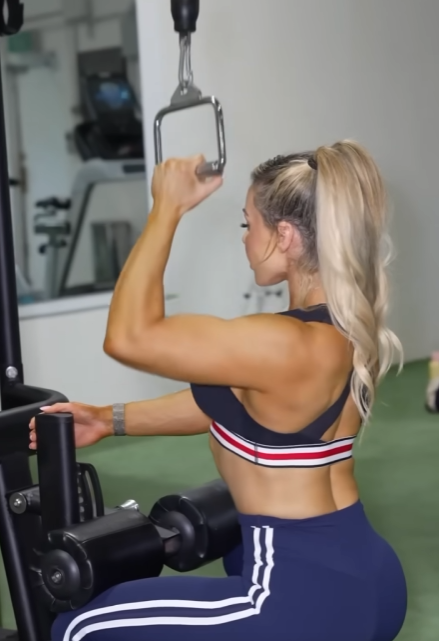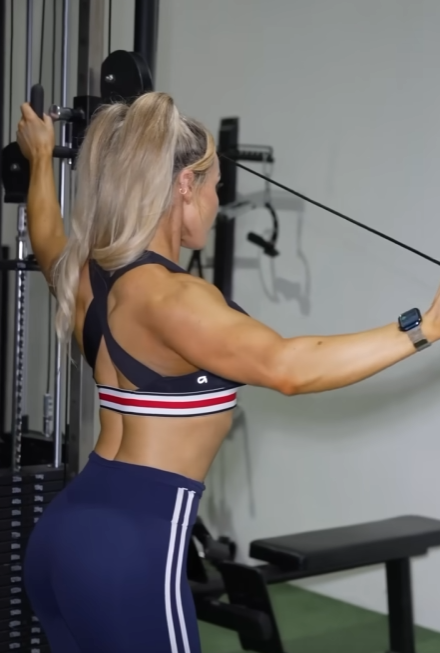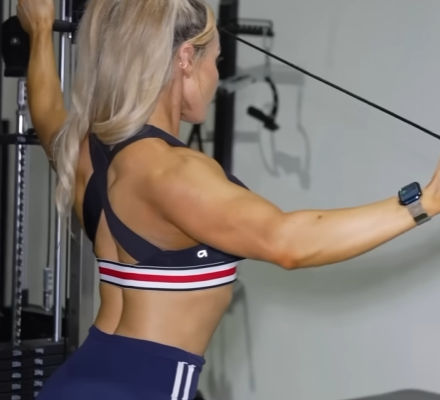
A strong, well-developed back is the foundation of overall upper body strength, posture, and aesthetics. Whether you want to improve your physique, enhance your athletic performance, or simply maintain a healthy posture, a well-structured back workout is essential. This guide will take you through a complete back workout designed to build strength, size, and definition.

Why Train Your Back?
The back is made up of several major muscle groups, including:
- Latissimus dorsi (lats): The broad muscles that give your back a V-shape.
- Trapezius (traps): The muscles extending from your neck to your mid-back.
- Rhomboids: Located between your shoulder blades, crucial for posture.
- Erector spinae: Running along your spine, these muscles support posture and stability.
A strong back helps with posture, prevents injuries, and improves overall strength in compound movements like deadlifts and squats.
The Ultimate Back Workout
This workout includes a mix of compound and isolation exercises to maximize muscle engagement and growth. Perform this routine once or twice a week for optimal results.
1. Deadlifts (4 sets, 5-8 reps)
Deadlifts are the ultimate back builder, working the entire posterior chain, including the lower back, traps, lats, and erector spinae.
How to perform:
- Stand with feet hip-width apart, barbell over your midfoot.
- Hinge at the hips, grip the bar slightly outside your knees.
- Keep your back straight, engage your core, and drive through your heels to lift the bar.
- Lower the weight in a controlled motion.
Pro Tip: Avoid rounding your back to prevent injury.
2. Pull-Ups (4 sets, 8-12 reps)
Pull-ups are a fundamental exercise for building upper back strength, especially in the lats and traps.
How to perform:
- Grab a pull-up bar with a shoulder-width grip (palms facing away).
- Engage your core and pull yourself up until your chin is over the bar.
- Lower yourself in a controlled motion.
Modification: Use resistance bands for assistance if you’re struggling with bodyweight pull-ups.

3. Barbell Bent-Over Rows (4 sets, 8-10 reps)
This exercise targets the lats, traps, and rhomboids, improving thickness and strength.
How to perform:
- Hold a barbell with an overhand grip, slightly wider than shoulder-width.
- Hinge at the hips, keeping a slight bend in your knees.
- Pull the bar towards your lower ribcage, squeezing your shoulder blades together.
- Lower the weight slowly to maintain tension.
Pro Tip: Keep your back straight and avoid excessive jerking.
4. Lat Pulldowns (3 sets, 10-12 reps)
Lat pulldowns mimic the movement of a pull-up but allow for adjustable resistance.
How to perform:
- Sit down at a lat pulldown machine and grab the bar with a wide grip.
- Pull the bar down towards your chest while keeping your back straight.
- Slowly return to the starting position, maintaining control.
Pro Tip: Focus on squeezing your lats rather than using your arms to pull the weight.
5. Single-Arm Dumbbell Rows (3 sets, 10 reps each arm)
This unilateral movement enhances balance and strengthens the lats, traps, and rear delts.
How to perform:
- Place one knee and hand on a bench for support.
- Hold a dumbbell in the other hand and pull it towards your waist.
- Lower it back down in a controlled motion.
Pro Tip: Avoid twisting your torso to maximize back engagement.
6. Seated Cable Rows (3 sets, 12 reps)
This exercise targets the mid-back, improving thickness and definition.
How to perform:
- Sit on a cable row machine with your feet planted.
- Pull the handles towards your torso, squeezing your shoulder blades together.
- Slowly return to the starting position.
Pro Tip: Avoid leaning back too much—keep your torso upright.

7. Face Pulls (3 sets, 15 reps)
Face pulls strengthen the rear delts and upper traps, improving shoulder stability and posture.
How to perform:
- Attach a rope to a cable machine at face level.
- Pull the rope towards your face, keeping elbows high.
- Squeeze your shoulder blades together before returning to start.
Pro Tip: Use a light weight to maintain proper form and maximize activation.
8. Hyperextensions (3 sets, 15 reps)
Hyperextensions strengthen the lower back and improve overall spinal stability.
How to perform:
- Position yourself on a hyperextension bench.
- Cross your arms over your chest or hold a weight plate.
- Lower your torso while keeping your back straight, then raise it back up.
Pro Tip: Focus on using your lower back and glutes rather than jerking up with momentum.
Cool Down & Stretching (10 Minutes)
A proper cool-down enhances recovery and flexibility. Focus on stretching the lats, traps, and lower back:
- Child’s Pose – Sit back on your heels and extend your arms forward.
- Cat-Cow Stretch – Alternate between arching and rounding your back.
- Lat Stretch – Reach one arm overhead and bend sideways.
- Seated Forward Fold – Reach for your toes to stretch the hamstrings and lower back.

Post-Workout Recovery
Muscle growth happens outside the gym, so recovery is crucial. Follow these steps to maximize your back workout results:
- Hydration: Drink plenty of water to aid muscle function.
- Protein Intake: Consume a post-workout meal with lean protein (chicken, fish, tofu) and complex carbs (rice, quinoa, sweet potatoes).
- Rest & Sleep: Aim for 7-9 hours of sleep to support muscle recovery.
- Foam Rolling: Helps relieve muscle tightness and improve flexibility.
Final Thoughts
Training your back is essential for building a strong, balanced physique. By incorporating compound movements, isolation exercises, and proper recovery, you’ll develop strength, size, and definition in no time. Whether you’re a beginner or an advanced lifter, consistency is key—stick to the plan, challenge yourself, and watch your progress soar.
Now, grab your weights, hit the gym, and smash your next back workout with confidence! 💪
What’s your favorite back exercise? Let us know in the comments!



